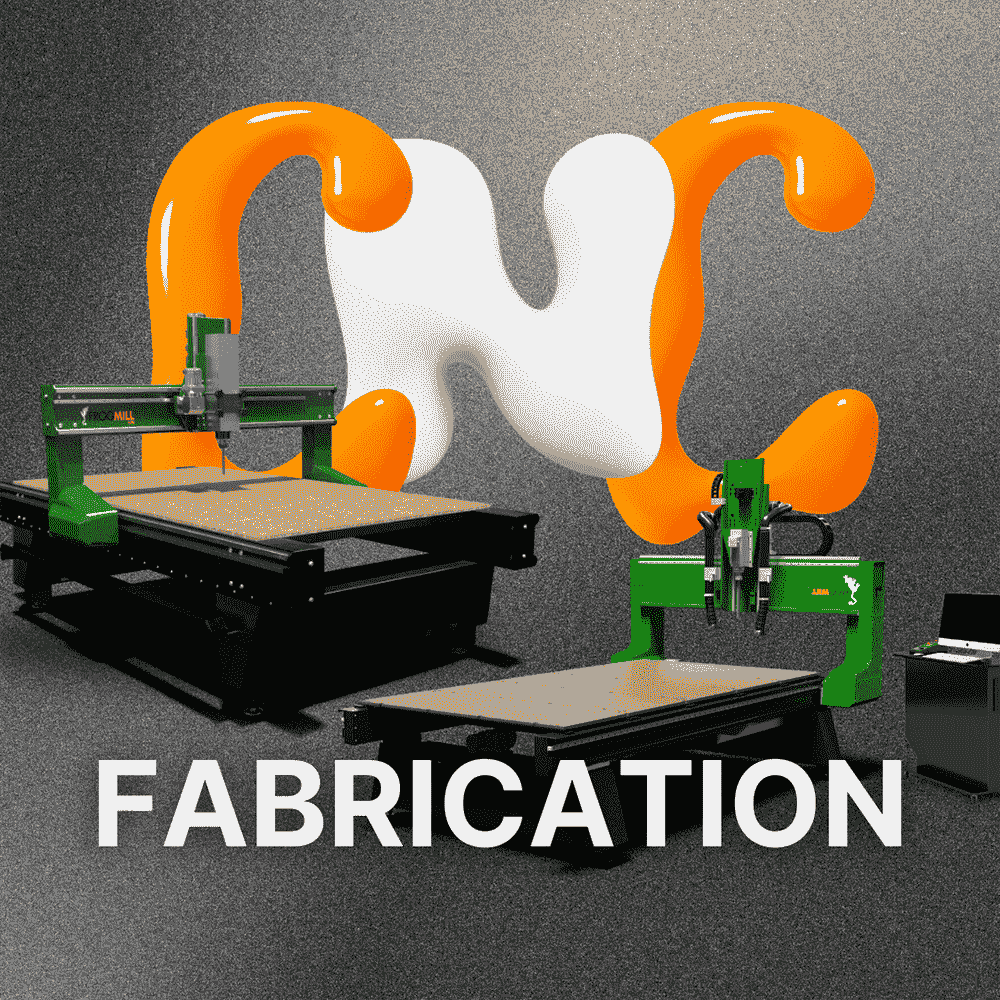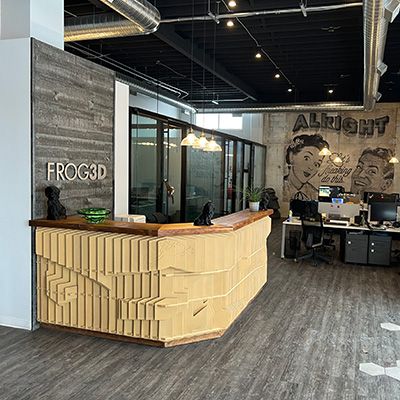Table of Contents
The advent of CNC machines has made manufacturing easier, faster, and more precise. CNC machinery and equipment are considered a critical piece of equipment in many manufacturing facilities. This is why when a CNC machine breaks down or experiences any malfunction, the whole manufacturing process has to be stopped until the problem is corrected. Such unexpected manufacturing downtime results in lower productive output, leads to excessive lag time, and creates bottlenecks in the supply chain.
This is why good maintenance habits on your CNC equipment can save you valuable time. It will lengthen the lifespan of your investment and ensure that the tools you rely on continue to perform. Regular maintenance keeps CNC machines operating at their optimal performance, and this includes ensuring accurate tool positioning, precise movements, and overall system reliability as CNC machining demands high levels of accuracy and precision. Consistent quality control is essential for meeting customer specifications and industry standards, and FROG3D® has some important CNC machine maintenance tips for the smooth running of your equipment. Read ahead to learn more!
1. Motion Control Components For Machining Precision
Motion control in CNC machining refers to the accurate control of the movement of machine tool components such as the cutting tool or the workpiece with multiple axes. CNC machines require programmed instructions to guide the tool’s movement, and this allows for highly accurate and automated results. CNC machines commonly operate in three or more axes (X, Y, Z) and each axis represents a direction in which the machine tool can move. Motion control systems synchronize the movement along these axes with utmost precision, allowing repeatability and efficiency in manufacturing processes. Motion control is an essential aspect of CNC machining, and it involves the coordination of different elements to achieve desired tool paths and part geometries.
1.2. Linear Bearing
Linear bearings are crucial components in CNC machining systems, as they play an important role in supporting and guiding the linear motion of machine tool components, including the cutting tool or workpiece along the various axes. The focal purpose of linear bearings is to allow smooth and unhindered movement, which in turn ensures accuracy and repeatability in CNC machining operations. Bearings are one of the most important components of your CNC machine, as smooth motion is essential for optimal cutting results. To properly maintain bearings for CNC machine upkeep, keep the CNC machine and its surrounding areas clean to limit the accumulation of dust, chips, and debris, and regularly clean the linear guide systems and bearings by using compressed air, brushes, or vacuum systems as this will prevent contamination and ensure smooth motion.
Bearings require proper lubrication and greasing to reduce friction-related wear and tear. All bearings have different greasing procedures, but most do require grease. Use the recommended lubricants and follow the specified intervals for reapplication. This should be done every month, however, each product will come with its own recommendations, always following the product guidelines. Regularly examine bearings for signs of chips, coolant, dust, or other debris, since this can accelerate wear and reduce bearing life. If the bearings are sealed, check the seals for integrity and replace damaged seals as soon as possible. For FROG3D® clients using foams, keep in mind that many grease products react poorly with foam dust, and we suggest always using white lithium grease for the FROG3D systems. White lithium grease is a versatile lubricant known for its water resistance, high melting point, and does not contain ingredients that melt foam.
Inspecting your bearings often is beneficial, and following safe procedures to remove them for replacement, or cleaning if necessary. It is important to keep the bearing rails clean as well, but avoid coating them with anything, as it is likely to cause dust to adhere to the rails rather than help keep them clear.
1.3. Drive System
The drive system in a CNC machine is critical for achieving precise and controlled movements of the cutting tool or workpiece during machining processes, and it is essentially the component that is responsible for motion. Streamline Automation’s FROG3D® router, the FROGMill™, uses a rack and pinion system. This includes a gear attached to a motor (the pinion), that rolls on a slotted track (the rack), and due to the exposed rack and pinion, keeping it clear and clean is important. An accumulation of compressed dust can create further mechanical problems or failures, so inspect it for possible buildup, and use tools to clear out any packed-in debris. The FROGWire™ uses a belt system, and belt systems require less maintenance but should be checked for tension often. Other CNC drive systems may include a chain drive or ball-screw.
1.4. Motors
Motors usually have clear indicators if there are any types of critical failures, but checking to ensure they are seated correctly can help maintain and extend their lifespan and motion accuracy. If you discover that the motor housing has become packed with debris, you should clean it out to maintain your CNC machine. Keep the motor housing and its surroundings clean from dust and debris as regular cleaning prevents the accumulation of particles that can affect motor performance. In addition, ensure that the motors are securely mounted and aligned correctly, as misalignment can lead to increased wear, vibration, and reduced motor efficiency.
It is important to regularly inspect the wiring and connections to the motor for signs of wear or loose connections, and tighten any loose connections, and replace damaged wiring for CNC machine maintenance. Always ensure to fully power down your CNC system before touching any of the wires, even if they are not carrying a current, and contact the system’s manufacturer if there are any damaged wires. When cleaning around the electrical components, use a proper vacuum as it is better than compressed air, since you do not want to blow dust further into those components. If your motors are getting excessively hot during operation, this is a sign that they should be further inspected. Motors generate heat during operation, and adequate cooling is essential. Thus, ensure that cooling systems such as fans are clear and functioning properly. In addition, check for proper ventilation around the motor to prevent overheating.
2. Computer Upgrades To Enhance CNC Machine Performance
At FROG3D®, we prefer to keep the controller PC dedicated to operating the system, and nothing more! Also, be mindful of operating system updates as these can sometimes cause problems with the controller software and connections with the signal generator. Keeping the PC offline will avoid any unwanted automatic updates to the operating system, and avoiding installing additional software onto it will keep it functioning to its best ability. Usually, it is advisable to keep a PC that is dedicated to operating automation as it was when the system was manufactured, unless specifically advised by the manufacturer.
If changes were made to your CAM (tool pathing) processes, it is possible that the exported files do not function on your CNC system. If this occurs, contact the system manufacturer as this may require an update of your post processors. An outdated computer may not be able to handle the files that modern software can generate, which may necessitate a computer upgrade, and this is best handled by the manufacturer. To maintain CNC machines, upgrade network adapters as this may improve connectivity, especially if the CNC machine requires communication with other devices in a network.
3. Tool Upgrades And Replacements
Machine tools are used for cutting, forming, and carving, and are essential parts of the manufacturing process. CNC machine tools are just as crucial as the machinery that is driving them, and this means CNC machine maintenance tips should include tool care. Some CNC tools can be sharpened by professional services, and if tools are to be sharpened, it is best to request or measure the new diameter/length and copy the details into the CAM software. Since tool manufacturing has its own advancements, it is suggested to monitor new tools as they become available. A tool that cuts better is less demanding of the CNC system driving it, and this leads to fewer potential problems with aspects such as motors and spindles, and provides an improved overall outcome.
4. Dust Collection And Ventilation
CNC machine maintenance should involve dust collection and ventilation as this helps to reduce exposure to airborne particles, and allows manufacturing areas to remain clean on the shop floor. Effective dust collection also minimizes the risk of dust-related fires in the workshop, making dust collection and ventilation crucial components of CNC machine maintenance and safety. Dust collectors capture and remove dust particles created during CNC processes, and include material dust from cutting, milling, or engraving tasks. A dust collection system includes a filter bag, ductwork, and a collection of hoods near the machining areas. Dust collectors require their own maintenance, such as inspecting the filter bag which should be cleaned or replaced when necessary. In addition, the lines should be cleared of debris, and not pose a tripping hazard in the workspace. Different attachments may be purchased to better assist with the vacuum setup.
Ventilation systems are designed to control and reduce fumes, gasses, and heat produced during CNC machining tasks, and help to maintain a safe, healthy, and comfortable environment. Ventilation systems are not always necessary for CNC machine maintenance, but are common in certain scenarios such as in small spaces when hotwire cutting is necessary. Proper ventilation is also necessary when using spray systems such as the FROGSkin™ by Graco, or painting. Professional maintenance companies specializing in the maintenance of these systems are highly recommended.
5. Training
Maintaining the safe procedures for your CNC systems is just as important as maintaining the systems themselves. System operators need to be trained in the proper handling, installation, and removal of cutting tools, and training should include information on tool maintenance, including checking for tool wear and inspecting cut qualities. Ensuring familiarity with tolerances and quality standards is vital to guarantee that the final products meet the specified requirements. Streamline Automation offers refresher training to help your staff. Training also equips operators with the skills to identify and troubleshoot common issues that may arise during the machining process, which are crucial for minimizing downtime and maintaining optimal production levels. Ongoing training ensures that operators remain updated on the latest advancements in CNC technology and software, as well as ensuring they are following safe and efficient procedures. This results in improved quality and fewer machining errors.
In addition, the system’s function and the files sent to the system have a part in their overall operation and performance, so it is essential to maintain good programming procedures. This can lead to minimized downtime on the systems and higher production levels.
6. Conclusion
At Streamline Automation, our team of expert technicians are eager to introduce you to the world of automated CNC machining and assist you in getting started. We are enthusiastic about sharing valuable insights and ideas that can enhance the efficiency of your production process. Our machines cater not only to the production industry, but are also employed by various creative and artistic shops seeking a seamless transition to automated production processes.
From conventional practices to unique tooling techniques, Streamline Automation is dedicated to helping you implement systems and processes that perfectly align with your specific setup and requirements. We are committed to providing comprehensive training and enabling our clients to surpass their competition. Our services include on-site training and product delivery, and we also offer remote online training to ensure that new staff members can easily grasp the initial setups. This remote option is convenient for refreshing your knowledge as needed. Contact us today for ample resources and support to get your systems up and running to ensure seamless manufacturing capabilities!




